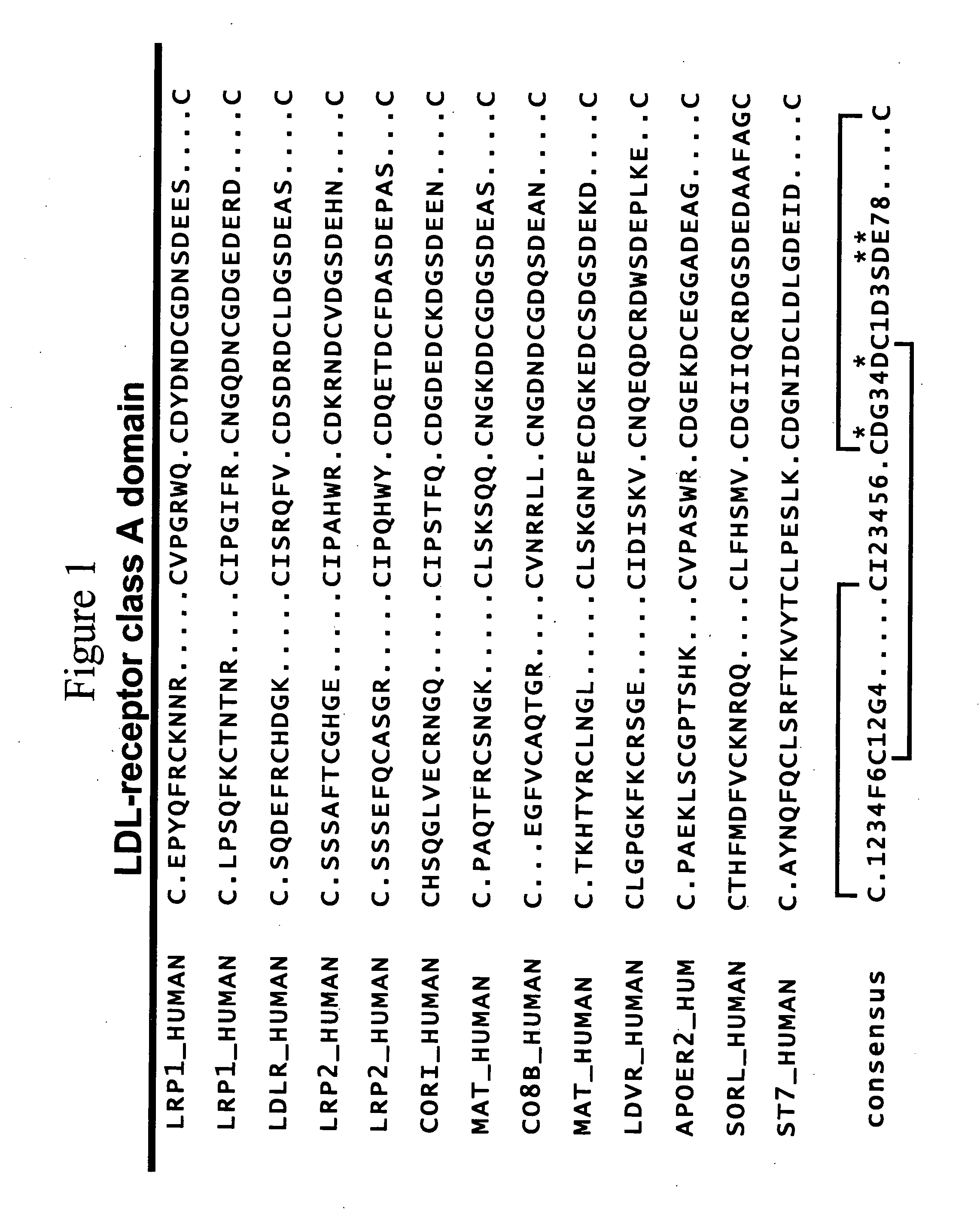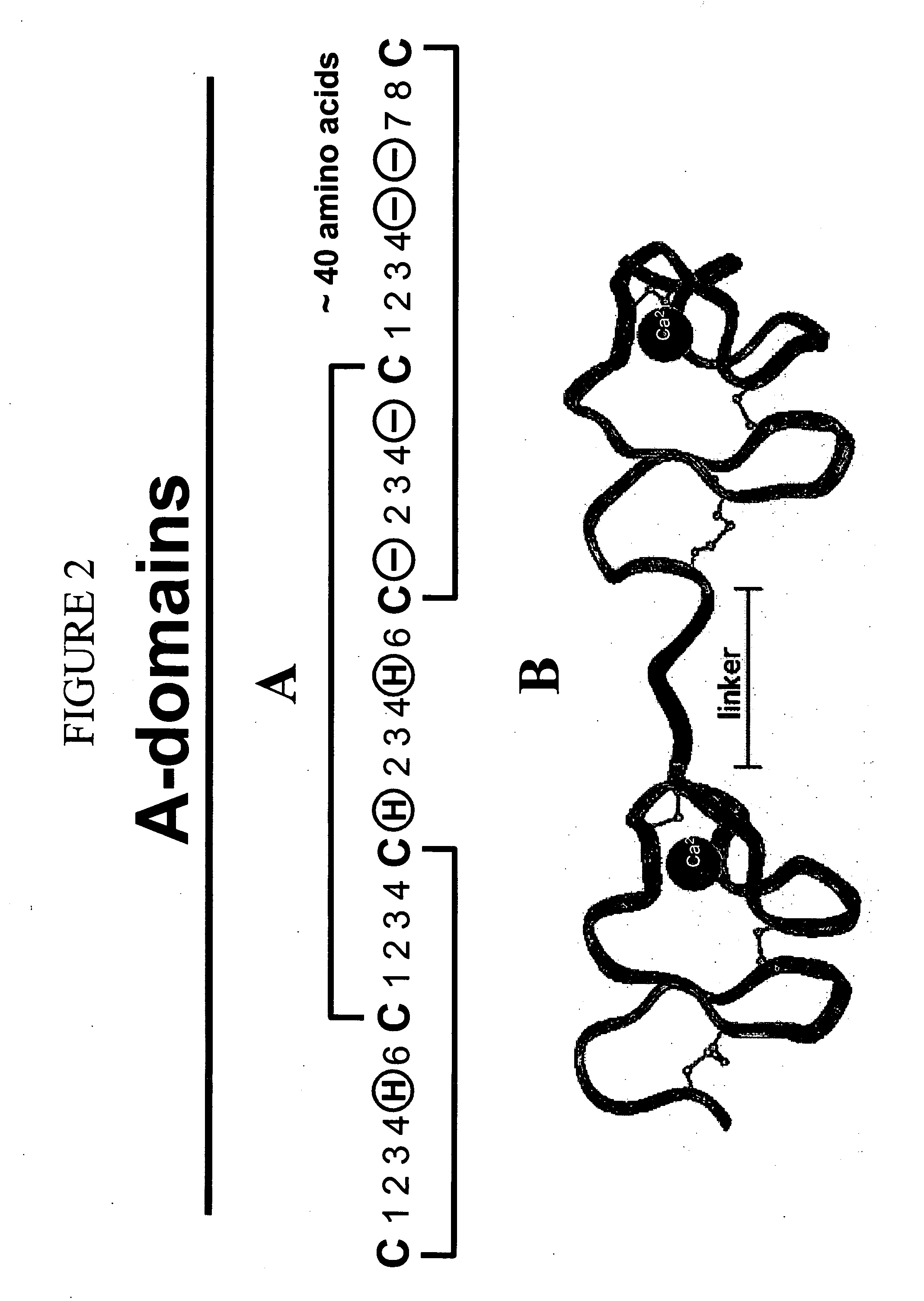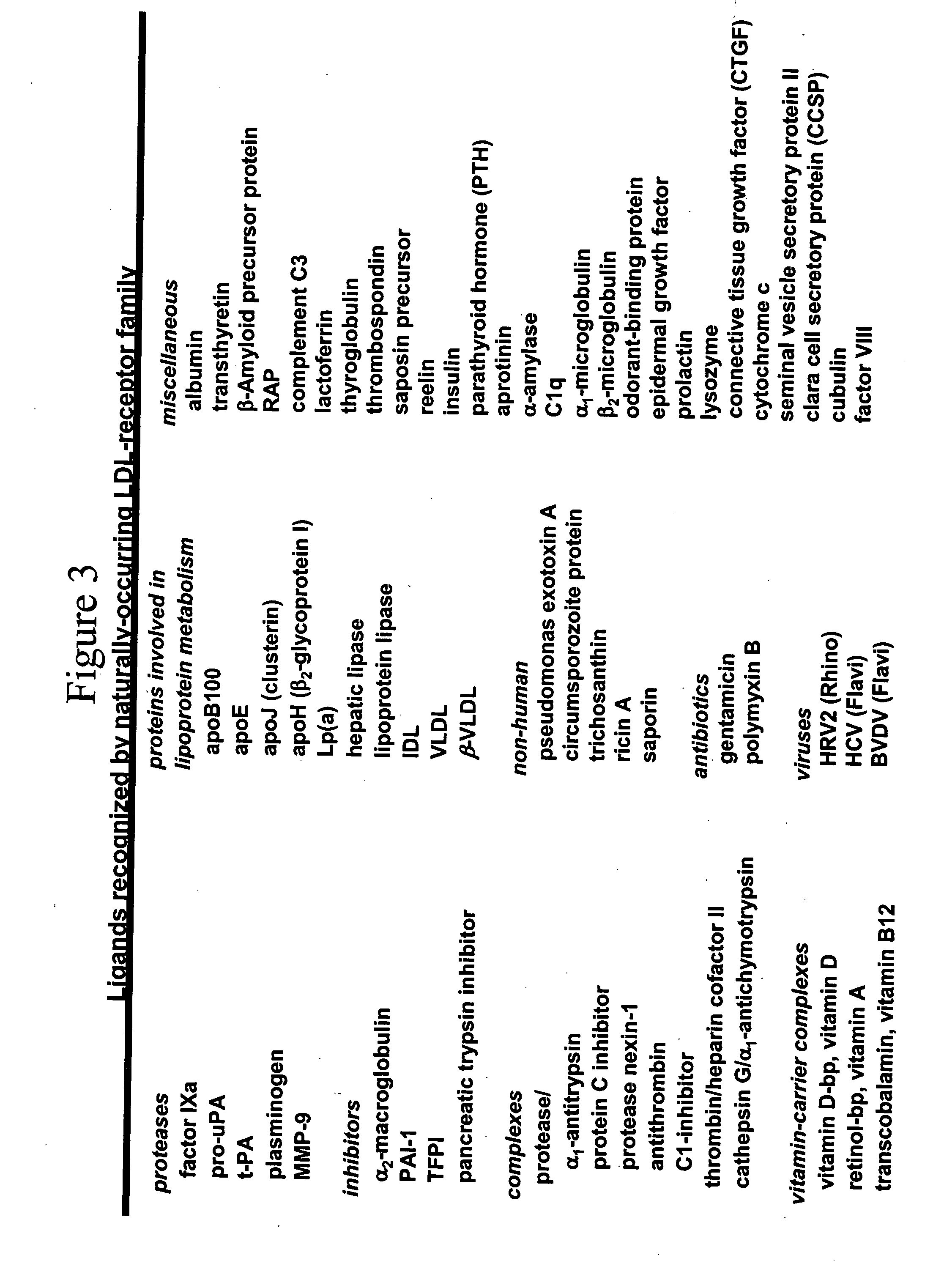c-MET kinase binding proteins
a technology of kinase and protein, applied in the field of c-met kinase binding proteins, can solve the problems of reducing the tumorigenic potential of human tumour cells, misexpression often correlates with poor prognosis, and downregulation of met or hgf expression in human tumour cells
- Summary
- Abstract
- Description
- Claims
- Application Information
AI Technical Summary
Benefits of technology
Problems solved by technology
Method used
Image
Examples
example 1
[0365] This example describes selection of monomer domains and the creation of multimers.
[0366] Starting materials for identifying monomer domains and creating multimers from the selected monomer domains and procedures can be derived from any of a variety of human and / or non-human sequences. For example, to produce a selected monomer domain with specific binding for a desired ligand or mixture of ligands, one or more monomer domain gene(s) are selected from a family of monomer domains that bind to a certain ligand. The nucleic acid sequences encoding the one or more monomer domain gene can be obtained by PCR amplification of genomic DNA or cDNA, or optionally, can be produced synthetically using overlapping oligonucleotides.
[0367] Most commonly, these sequences are then cloned into a cell surface display format (i.e., bacterial, yeast, or mammalian (COS) cell surface display; phage display) for expression and screening. The recombinant sequences are transfected (transduced or tran...
example 2
[0371] This example describes in vivo intra-protein recombination to generate libraries of greater diversity.
[0372] A monomer-encoding plasmid vector (pCK-derived vector; see below), flanked by orthologous loxP sites, was recombined in a Cre-dependent manner with a phage vector via its compatible loxP sites. The recombinant phage vectors were detected by PCR using primers specific for the recombinant construct. DNA sequencing indicated that the correct recombinant product was generated.
[0373] Reagents and Experimental Procedures
[0374] pCK-cre-lox-Monomer-loxP. This vector has two particularly relevant features. First, it carries the cre gene, encoding the site-specific DNA recombinase Cre, under the control of Plac. Cre was PCR-amplified from p705-cre (from GeneBridges) with cre-specific primers that incorporated XbaI (5′) and SfiI (3′) at the ends of the PCR product. This product was digested with XbaI and SfiI and cloned into the identical sites of pCK, a bla−, CmR derivative o...
example 3
[0392] This example describes construction of an EGF-based monomer library.
[0393] Recombination can be used for intradomain optimization. FOr example a PCR overlap reaction can be used that recombines two or more segments of a single domain relative to each other. One can use two, three, four, five or more fragment overlap reactions in the same way as illustrated. This recombination process has many applications. One application is to recombine a large pool of hundreds of previously selected clones without sequence information. All that is needed for each overlap to work is one known region of (relatively) constant sequence that exists in the same location in each of the clones (fixed site approach). For A domains, typically these clones would have been derived from a library in which 20-25 amino acids distributed over all five inter-cysteine segments were randomized. The intra-domain recombination method can also be performed on a pool of sequence-related monomer domains by standa...
PUM
 Login to View More
Login to View More Abstract
Description
Claims
Application Information
 Login to View More
Login to View More - R&D
- Intellectual Property
- Life Sciences
- Materials
- Tech Scout
- Unparalleled Data Quality
- Higher Quality Content
- 60% Fewer Hallucinations
Browse by: Latest US Patents, China's latest patents, Technical Efficacy Thesaurus, Application Domain, Technology Topic, Popular Technical Reports.
© 2025 PatSnap. All rights reserved.Legal|Privacy policy|Modern Slavery Act Transparency Statement|Sitemap|About US| Contact US: help@patsnap.com



